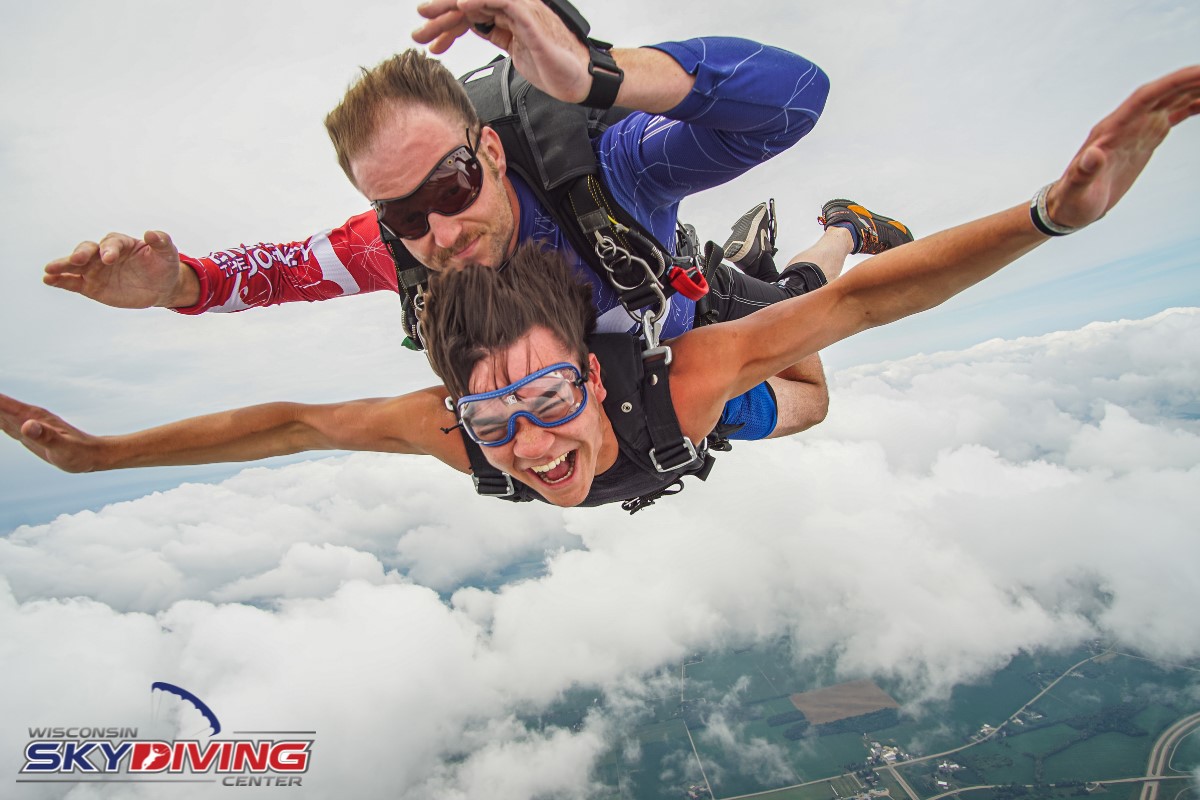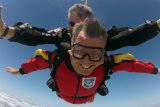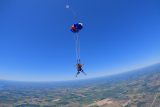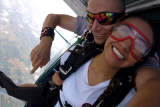Are Skydiving Risks Acceptable?
Skydiving Safety
Posted by: Wisconsin Skydiving Center 7 years ago
Tandem skydiving made its debut in the early 1980s, but–unlike glam hair and pet rocks–it has remained very much in style. According to the statistics lovingly collected by the United States Parachute Association, many millions of new jumpers take to the air each year on tandem skydives–and they land safe, sound and overjoyed nearly every time.
That said, tandem skydive does carry risks–as does literally everything else that’s interesting in this life–and those risks need to be thoughtfully, individually evaluated by each person who’s stoked to undertake the adventure of freefall. The very fact that you’re jumping out the door of an airplane means that you’re stepping outside of business-as-usual; every now and then, something happens that wasn’t part of the original plan.While death is an extraordinarily uncommon eventuality (see USPA’s detailed statistics on tandem safety), there are other risks that come with the territory. Let’s break ’em down together.

Ankle Oopsies
For the most part, skydiving accidents are super-uncommon–and, usually, minor. As far as tandems are concerned, the most common skydiving accident is a sprained (or broken) ankle. These typically occur upon–you guessed it–landing. More often than not, ankle dings make their appearance when a tandem student fails to follow the instructions for the landing, which clearly state that the student should lift his or her legs when the pair is about to touch down. If you lift those legs, your ankles will be well out of the line of fire.
Tummy Troubles
Sometimes, a tummy full of butterflies decides that it wants to burst out into the world.
Seriously, though–for people who experience motion sickness, the deluge of adrenaline during a tandem skydive can sometimes be a trigger for dizziness and/or nausea. If it’s going to happen, it usually happens under canopy, not in freefall–and it’s usually controlled by using the same over-the-counter anti-motion-sickness meds that sensitive folks already use for their other adventures. If that’s you, just be aware and come prepared.
Parachute Problems
Maybe this is you?
OMIGOD, PARACHUTE PROBLEMS THIS IS EXACTLY WHAT I WAS TALKING ABOUT SOMETIMES THE PARACHUTE DOESN’T WORK WORST THING EVER CAN NOT HANDLE
The thing about modern skydiving is that we’ve got those parachute problems well under control, so there’s no reason whatsoever to panic. The sport of skydiving has always been chock-full of innovators, dedicated to working out solutions to every safety hitch…and these devices work. Most importantly, this ongoing investment and R&D into our equipment and safety tools has led to the two-parachute system and the automatic activation device, which have collectively made skydiving safer than commuting.
The latter–the automatic activation device, or “AAD”–is designed to deploy the skydiver’s backup parachute even in the event that he/she is totally unconscious in freefall. Talk about a failsafe, right?!
So–are those risks acceptable? We live our lives by the fact that they are, but that “yes” or “no” is a decision for you and you alone to make. We’re available for any questions you might have about these risks–or the process of a tandem skydive in general–and we’d be honored to answer them for you in absolute honesty and thoroughness. Don’t be a stranger. Ask away!
Categories:
You May Be Interested In:

What’s a Skydiving AAD & Why It Matters
10 months ago by Wisconsin Skydiving Center

How Much Experience Do Skydiving Instructors Have?
11 months ago by Wisconsin Skydiving Center

Do Skydivers Have Backup Parachutes?
1 year ago by Wisconsin Skydiving Center

Is Skydiving Safe? Stats, Equipment & Your First Time
1 year ago by Wisconsin Skydiving Center